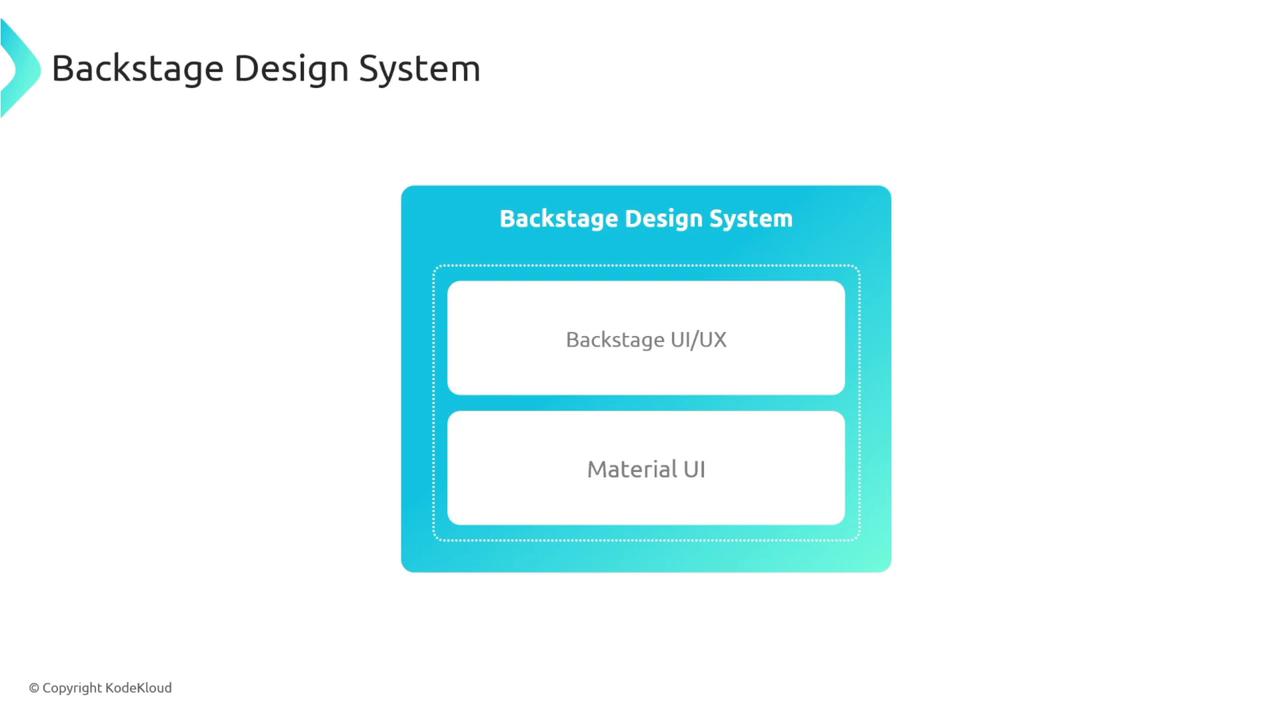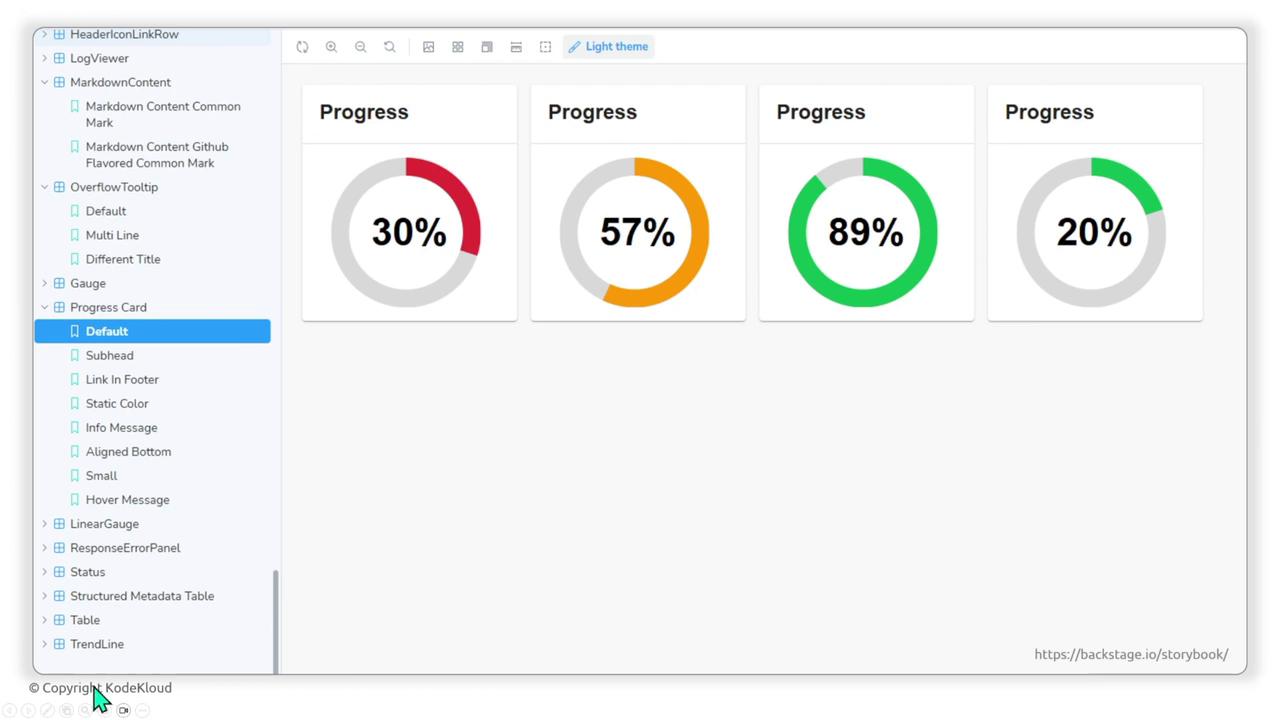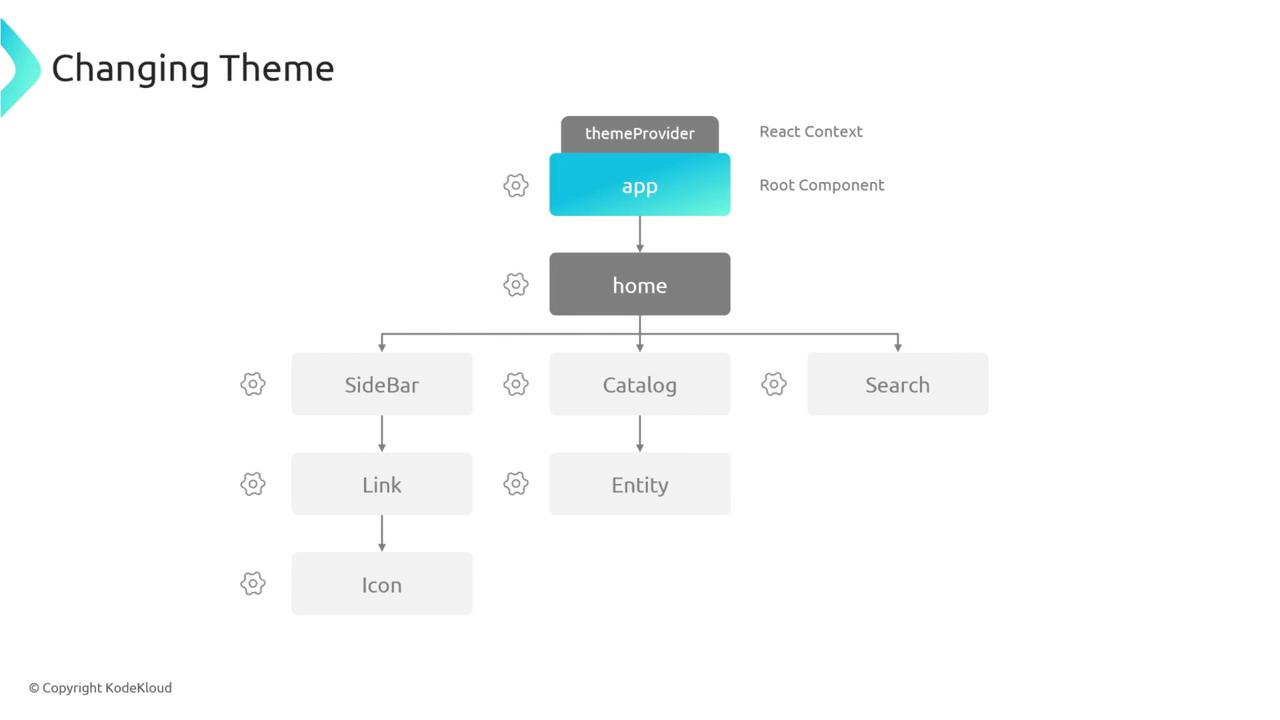Certified Backstage Associate (CBA)
Customization Plugins
Customizing UI
In this guide, we’ll show you how to customize the Backstage user interface by leveraging its design system, theming capabilities, and React Context integration. You’ll learn how to integrate Material-UI, explore prebuilt Backstage components, create a custom theme, and apply it across your app.
Backstage Design System
Backstage’s design system builds on top of Material-UI and Backstage’s own component library. All Material-UI components work seamlessly alongside Backstage’s custom elements—giving you a consistent look and feel.

Material-UI Integration
Material-UI provides prebuilt React components—buttons, cards, sliders, etc.—that you can drop right into your Backstage frontend.
Install the core packages:
npm install @mui/material @emotion/react @emotion/styled
Then import and use the components:
import Button from '@mui/material/Button';
import ShoppingCartRounded from '@mui/icons-material/ShoppingCartRounded';
export const MyButtons = () => (
<>
<Button variant="text" startIcon={<ShoppingCartRounded />}>
Add item
</Button>
<Button variant="contained" startIcon={<ShoppingCartRounded />}>
Add item
</Button>
<Button variant="outlined" startIcon={<ShoppingCartRounded />}>
Add item
</Button>
</>
);
Note
Browse the full list of Backstage and Material-UI components in the Backstage Storybook.
Exploring Backstage Components
Backstage publishes its components in Storybook. You’ll find cards, progress bars, navigation elements, and more—all ready to customize.

| Component Type | Description | Example Usage |
|---|---|---|
| Card | Container for grouped content | <Card><CardContent>...</CardContent></Card> |
| Progress Circle | Visualize task completion percentage | <CircularProgress variant="determinate" value={50} /> |
| Sidebar | Navigation wrapper for main sections | <Sidebar><SidebarItem to="/">Home</SidebarItem></Sidebar> |
Theming in Backstage
A theme defines colors, typography, shadows, and opacity. Backstage supports multiple themes (light/dark) so you can match your brand or user preferences.

Creating a Custom Theme
- In your frontend app directory, navigate to
packages/apps/<your-app>/src. - Create a
theme/folder and addmyTheme.ts.
Define your theme using Backstage theming utilities:
// packages/apps/<your-app>/src/theme/myTheme.ts
import {
createUnifiedTheme,
createBaseThemeOptions,
palettes,
} from '@backstage/theme';
export const myTheme = createUnifiedTheme({
...createBaseThemeOptions({
palette: palettes.light,
}),
fontFamily: 'Comic Sans MS', // Custom font
defaultPageTheme: 'home', // Default layout style
});
Custom Color Overrides
Override specific palette values for a unique look:
export const funTheme = createUnifiedTheme({
...createBaseThemeOptions({
palette: {
...palettes.light,
mode: 'light',
primary: { main: '#e30777' },
secondary: { main: '#f50057' },
},
}),
});
These colors will propagate to Buttons, Links, Charts, and other components.
Warning
Using a nonstandard font like Comic Sans MS may impact readability. Choose a web-safe or hosted font for production.
Applying the Theme with React Context
Backstage uses React Context to make the theme available to all components. Wrap your root app with ThemeProvider:

// packages/apps/<your-app>/src/App.tsx
import React from 'react';
import { ThemeProvider } from '@backstage/core-components';
import { myTheme } from './theme/myTheme';
import { AppRoutes } from './AppRoutes';
export const App = () => (
<ThemeProvider theme={myTheme}>
<AppRoutes />
</ThemeProvider>
);
By wrapping AppRoutes in ThemeProvider, the myTheme object is shared throughout your component tree—allowing consistent styling based on your custom theme.
Next Steps
Now you’re ready to:
- Integrate Material-UI components into Backstage.
- Browse and customize Backstage Storybook components.
- Define custom themes that match your brand.
- Apply them across your app using React Context.
Links and References
Watch Video
Watch video content